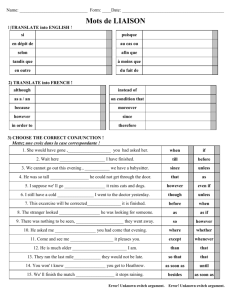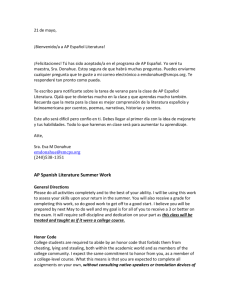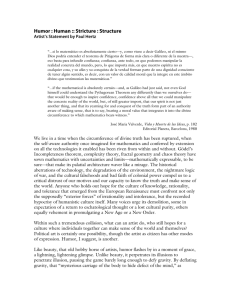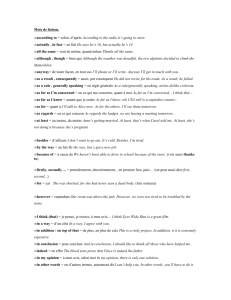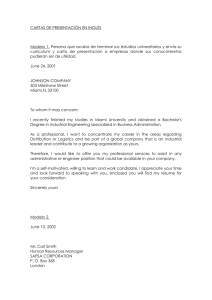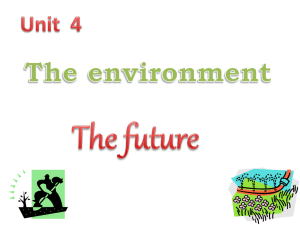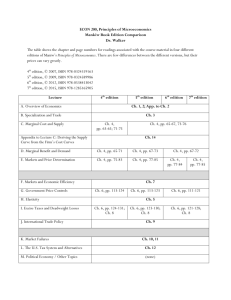Gender and urban planning - n
advertisement
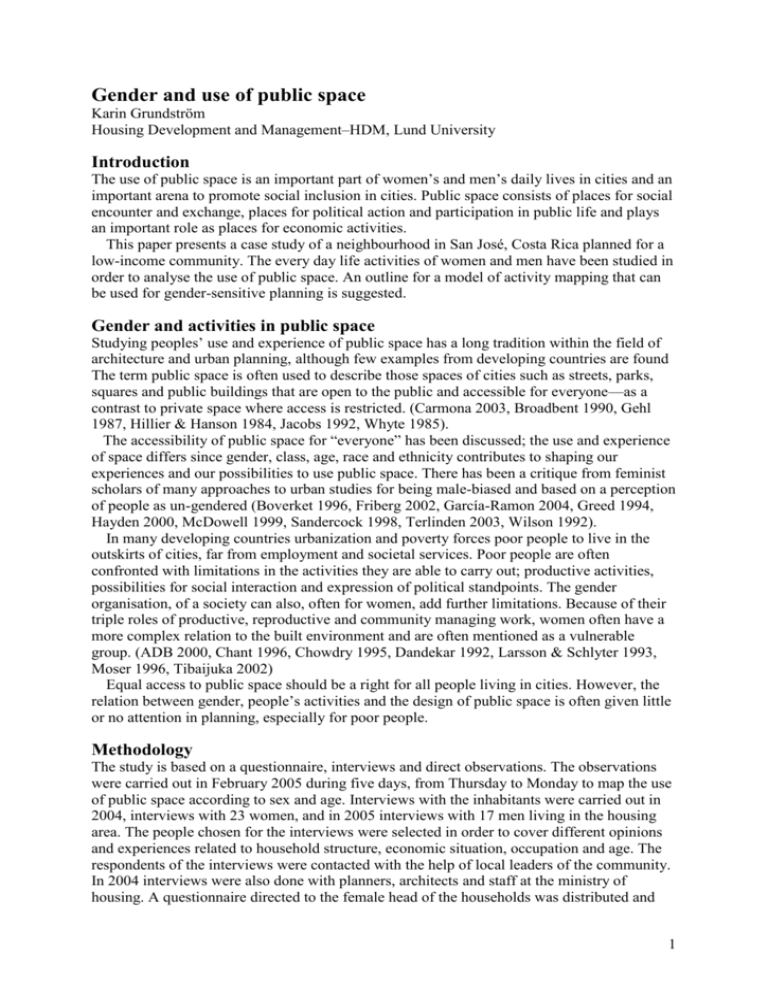
Gender and use of public space Karin Grundström Housing Development and Management–HDM, Lund University Introduction The use of public space is an important part of women’s and men’s daily lives in cities and an important arena to promote social inclusion in cities. Public space consists of places for social encounter and exchange, places for political action and participation in public life and plays an important role as places for economic activities. This paper presents a case study of a neighbourhood in San José, Costa Rica planned for a low-income community. The every day life activities of women and men have been studied in order to analyse the use of public space. An outline for a model of activity mapping that can be used for gender-sensitive planning is suggested. Gender and activities in public space Studying peoples’ use and experience of public space has a long tradition within the field of architecture and urban planning, although few examples from developing countries are found The term public space is often used to describe those spaces of cities such as streets, parks, squares and public buildings that are open to the public and accessible for everyone—as a contrast to private space where access is restricted. (Carmona 2003, Broadbent 1990, Gehl 1987, Hillier & Hanson 1984, Jacobs 1992, Whyte 1985). The accessibility of public space for “everyone” has been discussed; the use and experience of space differs since gender, class, age, race and ethnicity contributes to shaping our experiences and our possibilities to use public space. There has been a critique from feminist scholars of many approaches to urban studies for being male-biased and based on a perception of people as un-gendered (Boverket 1996, Friberg 2002, García-Ramon 2004, Greed 1994, Hayden 2000, McDowell 1999, Sandercock 1998, Terlinden 2003, Wilson 1992). In many developing countries urbanization and poverty forces poor people to live in the outskirts of cities, far from employment and societal services. Poor people are often confronted with limitations in the activities they are able to carry out; productive activities, possibilities for social interaction and expression of political standpoints. The gender organisation, of a society can also, often for women, add further limitations. Because of their triple roles of productive, reproductive and community managing work, women often have a more complex relation to the built environment and are often mentioned as a vulnerable group. (ADB 2000, Chant 1996, Chowdry 1995, Dandekar 1992, Larsson & Schlyter 1993, Moser 1996, Tibaijuka 2002) Equal access to public space should be a right for all people living in cities. However, the relation between gender, people’s activities and the design of public space is often given little or no attention in planning, especially for poor people. Methodology The study is based on a questionnaire, interviews and direct observations. The observations were carried out in February 2005 during five days, from Thursday to Monday to map the use of public space according to sex and age. Interviews with the inhabitants were carried out in 2004, interviews with 23 women, and in 2005 interviews with 17 men living in the housing area. The people chosen for the interviews were selected in order to cover different opinions and experiences related to household structure, economic situation, occupation and age. The respondents of the interviews were contacted with the help of local leaders of the community. In 2004 interviews were also done with planners, architects and staff at the ministry of housing. A questionnaire directed to the female head of the households was distributed and 1 answered by 300 households in 2004. The questionnaire was aimed at collecting demographic facts about the households of Lindora and their use of public spaces. Housing for low-income families In Costa Rica there is an increasing urbanisation concentrated to the GAM (Gran Area Metropolitana) the area surrounding the capital San José. The existing housing deficit is about 140 000 units, of which 48% is in the GAM. Out of this, 70% of the housing deficit is concentrated in low-income sectors. The economic crises in Costa Rica has led to a dramatic increase of families living in poor conditions, today about 28–30% of the total housing stock. In trying to cope with the situation, state policies allocate resources for housing through SFNV (National Financial System for Housing), allowing involvement of many public and private entities, such as cooperatives, private and public banks and NGOs. SFNV has several instruments including a direct subsidy for housing, el bono, that allows low-income groups to obtain housing. The subsidy can be used to buy or construct a house and is proportional to the household’s economic capacity. A family is eligible if its monthly income does not exceed the equivalent of four minimum salaries. The subsidy can only be given to a household once, connecting them to a property such as a specific lot or house. The authorities demand legal property ownership to grant loans and subsidies. SFNV grants complementary mortgage credit under market conditions. For low-income families the bono is inadequate for a basic housing unit of 40 m², but housing can be made accessible if, in addition to the subsidy, the efforts of the family and the community and cost reducing methods are used (Rodriguez 1996, Estado de la nación 2004). FUPROVI (La Fundación Promotora de Vivienda) is a non-governmental organisation founded in 1987 that has been working with organised self-help construction as one way of reducing the costs of construction and building local capacity through the participation of the households. The target population is low income families. Most families have only one income, 80% of the families earn less than two minimum salaries, and the remaining 20% are below one minimum salary. Most of the families come from spontaneous settlements in urban areas. Special attention is given to vulnerable groups such as woman headed families, the elderly, families affected by natural disasters and refugees. (www.fuprovi.org) Lago de Lindora One of FUPROVI’s largest housing areas is Lago de Lindora that consists of 385 houses and is situated in the outskirts of the capital. Lindora is situated on farmland that was donated to the community by a local landowner two km. off the main road. The urban plan is a quite strict grid plan with single, detached houses. All houses have water and electricity and a watertreatment plant was built during the self-help construction phase. There is a small school for younger children built on the initiative of the community, and there are a number of small workshops, beauty shops, food stores and small kiosks. In the urban plan an effort was made to increase the amount of green areas and as a result almost half the land of the housing area consists of public space such as streets, commercial zones, greens, parks and a playground. The playground was put in order by the community, but was vandalized and can no longer be used. Although there is a lot of public space the quality is low and the space is not very much used by the inhabitants for their social, recreational and/or economic activities. Don Fernando who has lived in Lindora since the beginning thinks that the projects was very successful in delivering houses, but failed in providing public space for various activities. En áreas comunales estaríamos hablando con mucha franqueza de que eso si fallo en un 100%. La primera asociación, fue muy efectiva para lo que fue proyecto vivienda, lo que llamamos cada asignatario con su casa. Pero si vuelvo a repetir se fallo en, digo más bien porque en ese entonces yo no estaba. Fallaron en que no dejaron asignados ningún 2 terreno. Bueno para escuela si, para iglesia no, para salón comunal no, para poli deportivo no y para otras recreaciones no. O sea que no pensaron en el futuro para nada. The houses are detached houses of 40 m² of the same type, planned for one living room, two bedrooms, a bath and kitchen/washing facilities. The plot size is an average of 120 m² and the houses were constructed along the street with windows facing the street and the backyard. Included in the organized self-help construction phase was the technical infrastructure of water and sanitation and the basic housing unit without interior walls, ceilings and fittings. The families have, as far as their economic situation has allowed, in time finished and/or extended the basic housing unit. During the self-help construction phase that lasted for more than three years, each family had to contribute with 30 hours of labour per week. The major part of the construction work in this project was done by women. Doña Cecilia and her husband both participated with their labour, but Cecilia remembers that there were many single women who had to work very hard to be able to participate. En realidad el trabaja de la mujer en esta comunidad ha sido muy arduo, se puede decir que del trabajo de 100 % un 90% ha sido a cargo y responsabilidad de la mujer, y un 10% ha sido del hombre, a excepción de algunos hombres. Porque en realidad algunos hombres si han trabajado duro, pero se puede decir que la mayoría, o sea el aporte fuerte del proyecto en si, del trabajo en la comunidad ha sido la mujer. /…/ Parecer ser que hay mujeres que estamos, en el caso mío yo, somos matrimonio y los dos aportamos prácticamente en un igual de trabajo, los dos económicamente y en el trabajo físico, pero hay muchas mujeres solas en la comunidad. Pero irónicamente trabajaron en el proyecto solas, incluso con hijos menores de edad viniendo a trabajar, sin embargo, ahora las vemos con compañeros. Entonces es una cosa que uno dice que es una ironía, pero cada mujer es cada mujer. The majority of the families who moved to Lindora in 1998 came from other housing areas in the vicinity, where many were living in illegal conditions and often as lodgers. The average household size is 4,6 persons per household and one third of the households are headed by women. Half of the women in the area are housewives by occupation and 45% work with income-generating activities mainly domestic work and sales. The men work with construction, transport, security and different types of technical work. Incomes stated in the questionnaire ranges from 20 000 to 500 000 colones/month and family. The minimum salary in February 2004 was 86 000 colones. In Lindora 34% of the respondents state they have a family-income that is 90 000 colones and less, 80% say they have a family-income which is less than 160 000 colones per month, or the equivalent of two minimum salaries. Every day life activities The every day life activities taking place within productive and reproductive activities are taking place at different scales in private and public spaces. During the self-help construction phase activities that are normally taken care of by women in private space such as childcare and cooking were carried out in public space in a day care centre and a community kitchen, but after the area was finished those activities moved back into private spaces. Productive activities Both women and men use their houses for income-generating activities. Using the house as a production unit is done in many different ways. Women produce different types of food, like bread and salads that they sell in the community. Women also sell services like childcare and beauty treatments where a part of the house is used as a nursery or hairdresser. Men use their houses as production units for their businesses such as an artisans’ work-shop, a carpentry or 3 a garage for repairing cars. Both women and men use part of, or extensions of, their houses for small shops selling mainly various types of food. Housing is also income generating through letting out rooms or parts of the house to tenants. Doña Carmen is a housewife, but also works with various income generating activities in between her domestic duties. She tells of how she sometimes bakes bread and sends her daughters off to sell it door to door to people she trusts in the community. … si no tengo trabajo en mi casa yo me pongo hacer pan, o yo me pongo hacer algo para vender, hago algo pero no crea que aquí va a faltar, para ayudar a mi esposo no va a faltar. Yo así estuve al principio vendiendo pancito, yo vendía pancito mi chiquitas me ayudaban a ir a colocarlo a las casas, ellas iban y dejaban las bolsitas de pan, el resto las iban a vender sonde más o menos sabía yo que no había peligro, porque hasta para eso también, uno no puede mandar a los chiquitos a exponerlos, pero más o menos yo sabía a donde las mandaba. Don Rodrigo lost his previous job as a salesman and has recently started selling secondhand tires and doing some repair work for cars. He is uses the garage of the house for his activities. …(yo) pude montar aquí en el garaje de la casa un pequeño taller de llantas y un poquito de mecánica, eso es lo que yo hago aquí. Eso es prácticamente mi actividad, mi trabajo. /.../Un día ordinario es levantarme en la mañana, abro el taller llega alguna persona, entonces ella para que repare alguna llanta o que quiera algún trabajo de mecánica. Changes in relation to productive activities have been done as extensions of workspaces both at the back of the house, using the courtyard for a work-shop, or towards the street, constructing extensions for sales or services or using the plot for car repairs. Both women and men use extensions of the house for productive activities, but only women use the interior, such as the living room, of their houses. Women, who work with both productive and reproductive activities in their houses, have made changes so that they have their working space in part of the living-room to facilitate contacts with clients who visit them. Doña Elena is tied to her house due to health-problems, but because of her earlier occupation within the public health sector she has the experience to help people in the community with various smaller health problems. She therefore receives clients in her living room and has moved the kitchen out into the living room so that she can manage to cook for her family, receive clients in her house and offer them some small refreshment and at the same time have a good view of what is going on in the street. Since she spends her days in her house she also keeps an eye on the street and watches over her neighbour’s houses to avoid break-ins. Except for the economic activities that are ongoing in people’s houses there is no other work place in Lindora, the only public space used for economic activities is the street. Two plots have been planned as commercial zones, but so far nothing has been built. Whereas the houses are used by both women and men, street vending is done only by men and boys. Street vendors come to the area on foot, by bike or by pick-ups to sell fruits, vegetables, eggs and clothes, going from house to house, shouting out their products. Activities and spaces to support income generating activities for both women and men are needed in the area. Doña Ana is a newly divorced mother of three who is working as a hairdresser, traveling to various areas to seek up clients in their homes. Her dream is to have her own beauty shop, but she realizes the economic difficulties of putting up a business in Lindora and finding clients. But having a workplace in the vicinity of where she lives would make it easier for her to work and at the same time take care of her children. Sería lindo tener una fábrica aquí en la comunidad donde podamos trabajar todos y generar. Cuando leo el periódico veo cómo muchas mujeres y muchas comunidades han 4 podido generar y ya están vendiendo, pero ha habido alguien, una institución que les ha dado un préstamo para que empiecen a vender y entonces la misma actividad va generando para pagar. Eso sería bueno. Reproductive activities Many of the reproductive activities take place inside the houses. As primary care-takers of family members and having the main responsibility for domestic work, reproduction takes a great part of women’s working hours. Of the women responding to the questionnaire, 58% spend more than 60 hours per week doing domestic work, and 14% spend 20—40 hours/week on domestic work and another 14% spend 5—20 hours. Women’s domestic work is largely related to who they care for in their households, their husbands, parents and/or children. Domestic work is time consuming since most work is done by hand, and is provided at different times to different members of the household. For women who also work with income-generating activities, their domestic duties are waiting for them when they come home from work. Caring for other household members is another important task for women. Doña Nina is retired and lives with her brother and her 92 year old mother who she cares for. Her son also shares the household, but has his own room with a private entrance constructed at the back of the house. Doña Nina describes her daily work and responsibilities; Me levanto a las 5:30 a.m. y alisto el almuerzo para mi hijo que se va al trabajo. Luego, me quedo levantada y tengo unos pollitos y una pareja de perros, los atiendo y comienzo a recoger la ropa para lavar y a hacer el desayuno para mi mamá; después sigo con los mandados y si tengo que salir a San José o al hospital a algún control médico. /…/Mi mamá es una persona muy nerviosa, por su edad, entonces cuando yo salgo ella me espera en el cuarto de afuera hasta que yo venga./.../ Yo casi no salgo, excepto cuando vamos con el grupo del Adulto Mayor a hacer un paseo. Yo no puedo salir mucho porque no puedo dejar a mi mamá sola. There is no day care centre or other place for activities for children in the area. Doña Vera works part time as a cook and her two children stay at home on their own after school since there is no place where she feels there is someone she trusts who could take care of them. …los dejo un rato solos mientras vengo. Porque no hay una parte donde uno diga quédense aquí mientras uno viene, gente donde uno pueda con confianza dejarlos un ratito. Entonces ellos vienen, la vecina les abre la puerta, y ellos se quedan aquí solitos mientras vengo yo. Changes of the houses in relation to domestic work have been done as extensions of the cooking and washing facilities at the back of the house. The courtyard is used as an extended zone for housework, mainly for cooking and doing laundry. Doña Rosa has moved the cooker and the sink to the back of the house and uses the whole courtyard as a kitchen. Doña Maria is moving her kitchen from the back of the house to the front towards the street, something she says she knows is very common in Europe. She is much engaged in the community and has many visitors and having the kitchen towards the street will make it easier for her to communicate with people passing by and to see what is happening on the street. Reproductive activities carried out in public space are mainly related to the necessary activities of every-day life, people go shopping, travel by bus to work and school, people stroll along the main street on their way to do their errands and on Sundays go to a sermon. The inhabitants of Lindora do their shopping as far is possible in the area; there are a number of small kiosks, a greengrocer’s and a local bakery that has a good reputation. During the observations an equal number of men and women did their shopping in the small centre. More men than women travel by car to do their shopping, stopping at the local bakery. More boys than girls are sent to do errands. Twice as many women as men travel by bus, but an 5 almost equal number of boys and girls. Twice as many women as men are walking along the main street during daytime, but fewer girls than boys are seen in the streets. Women leave and pick up the youngest children at the school. When walking or passing in the street, women and especially girls walk in company with someone else, 68% of the women and 80% of the girls, whereas 40% of the men 70% of the boys walk or pass in company with someone else. Social activities that take place in public space are mainly children playing and people stopping to talk to each other. Children playing outdoors pass their time mainly in the streets. It is more common for girls to play in the front courtyard facing the street, whereas it is more common for boys to ride their bikes. Talking to another person in the street is done by twice as many men/boys as women/girls. It is more common for women to talk to someone in relation to another activity, such as waiting for the bus or doing errands, whereas it is more common for men to shout across the street to someone they want to talk to. Passing time on the street just hanging about is done by men and boys. Men stop by the bakery, buy something to drink or eat, have a cigarette and pass their time in the street and the sidewalk. Teenage boys stay at the bus stop, or go around on their bikes passing time, waiting for friends or for something to happen. During the years after the construction phase, FUPROVI has, together with members of the community, started various projects and programs, such as a group working with maintenence of the parks, a recycling program and a local safety-program called Policia Communitaria. At the moment they are starting up a project to support the sense of community in suburban areas called Communidad Barreal. There have also been private activities carried out within the community, such as finishing the construction of the streets, putting asphalt to avoid the dust. Many members of the community belong to different congregations and participate in activities related to their church such as fighting drug-addiction, supporting poor families and organising prayer-meetings. Even though there have been many programs and projects, there are not many that have lasted. The most durable and prosperous projects is a group of people who are working with the elderly in the community called Adulto Mayor. The project was started because of the difficulties facing many of the elderly. Doña Graciela who is one of the active members of the group explains: … hay un montón de viejitos, que tienen que vender rifas otras venden cosas para poder subsistir. Otros tienen la bendición más grande que tienen los hijos, y hay otros que tienen sus hijos pero las tienen encerradas en un cuarto, las están hostigando totalmente, psicológicamente. No las dejan venir a las reuniones, los hijos las maltratan verbal y psicológicamente, y ya físicamente, los nietos. Entonces ya es una situación que tenemos que ver cómo vamos a arreglar eso, porque aquí se esta dando mucho eso. There is no public building or community centre for activities and the many of the programs and activities are carried out in people’s homes. It is recognized by both women and men in the community that women have been, and still are, carrying out the social and community managing activities, but they have nowhere to carry out those activities. Outline for creating a map of activities The case study shows that public and private spaces are used differently by women and men, because of the division of labour, a larger part of women’s activities are related to reproduction and carried out in the private space and men are more related to productive activities and thereby to public space. Even though the public space of the neighbourhood at present is of low quality and not used by anyone, be they men or women, still men and boys carry out more social and economic activities in public space. The use of space is related to the gender organisation of society and to power relations between women and men, of what activities that are considered “natural” for men and women and what kind of behaviour in public space that is acceptable in relation to women and men, 6 boys and girls. Understanding how different activities are valued and positioned in relation to each other, and thereby having different positions in relation to the possibility of taking place (ie taking physical form), can be a starting point for analyzing the built environment with a gender perspective. Taking sociologist Pierre Bourdieus’ concept of field as a starting point a map of activities can be created, positioning men’s and women’s activities in relation to each other. According to Bourdieu a field exists when a limited group of people compete over something they have in common. A field is a system of relations between positions held by specialized agents and institutions competing over mutual interests. Within every field there is conflict and you have to try to find its’ specific forms—between the newcomer who is trying to enter the field—and the dominant position that tries to keep the monopoly and shut out any competition. A field is defined by determining what gains the competition concerns and what specific interests there are. In order to make the field work there have to people who are ready to play the game of the field, gifted with the habitus—the system of dispositions that is the result of social experiences, collective memories, ways of moving inscribed in people’s bodies—and senses that presupposes knowledge of and acknowledgement of the intrinsic laws and investments of the game. The structure of a field is a condition of positions of power between actors or institutions engaged in the competition. The structure of a field can also be defined by the distribution of the specific capital—assets or resources of social and/or economic character—that govern future strategies. The structure itself is always at stake, the competition within the field relates to who will have the monopoly of the legitimate violence (the specific authority) that is characteristic for the filed in study. The conflict is about preserving or changing the way in which the specific capital is distributed within the field. The field concept is used for exploration, as a searchlight aimed at systems of relations between positions. (Bourdieu 1995, Bourdieu 1992, Broady 1991) Relating this to the activities of women and men in public space in Lindora a map can be established that positions the activities in relation to each other. The struggle in this field concerns what activities should be given space to be carried out. Men’s activities have a traditionally stronger position in public space, where men have used the street to carry out their social and economic activities. Women carry out a lot of community managing work, that also contains social end economic activities, and are struggling to acquire public space for those activities. Within the field of activities in public space, men’s activities have a stronger power position—a higher consecration to the field— than women’s activities— which would mean a lower consecration. The activities are also positioned in relation to the autonomous principle of the field, the own logic of the field, in this case the reproduction of everyday life activities of the community that needs to be carried out and the heteronomous principle, meaning the influence of other fields, in this case the gender organisation of society and the low-income housing market more related to productive activities. Positioning a few of the activities described in the case-study, shows the power relations between different activities. Positions to the left of the map indicate reproductive activities that are of high relevance to the every day life of the community but that are not given any physical space to be carried out in. In the middle of the map reproductive activities are positioned that are carried out within the existing public space, and to the right productive activities are positioned. Women’s and men’s necessary activities of strolling and shopping are positioned in the centre of the map; this activity is carried out by as many women as men, it is seen as normal behaviour and is carried out in the existing space. Men’s streetvending activities are positioned in the upper right part of the map; these activities are productive activities, they’re carried out in the streets and is acceptable behaviour for men, the same activity is not acceptable for women’s behaviour and therefore has a position further down in the map. Activities such as child care 7 and caring for the elderly is positioned to the left of the map; these are reproductive activities that are not no provided with any public space, but women’s activities are positioned higher than men’s since there is a higher acceptance for women to carry out such activities. Looking at children playing football, that is a reproductive activity which is carried out within the existing space, mainly in the street, but is done by far more boys than girls which would put boy’s football playing activities in a higher position. High Consecration + (Men’s activities) Travelling by car ♂ Caring for children ♀ ”Hanging about” ♂ Caring for the elderly ♀ Streetvending ♂ Sales ♂ Shopping ♀ Shopping ♂ Autonomous (Reproductive activities) Heteronomous (Productive activities) Strolling ♀ Strolling ♂ ”Hanging about” ♀ Travelling by bus ♀ Sales ♀ Caring for children ♂ Playing football ♂ Caring for the elderly ♂ Streetvending ♀ Playing football ♀ Low Consecration – (Women’s activities) Figure1: Positioning of activities in public space in Lindora Establishing this map of activities gives a picture of how different activities are valued in general. Even though the structure of the map positions different activities in a specific way, individual women and men still have different possibilities to take part in these activities related to their individual capital and habitus. Relating activities to spaces and buildings Once the positions of different activities have been established, these activities can be related to spaces. In the case study of Lindora, different spaces for productive and reproductive activities were proposed by the inhabitants. In the same way as with the activities, a map of spaces can be established, where the positions of different spaces are related to each other, a map of spaces related to the every-day life activities. The map would in this case be defined by the relevance to the field of low-income housing, the autonomous principle of necessary activities and the heteronomous principle of the market of the building sector. 8 High Consecration Workshop for inc. gen. activities Houses School Footballground Streets Parks Centre for the elderly Playground Autonomous (Activities) Heteronomous (The market) Community Centre Daycare centre Comedor infantil Community kitchen Low Consecration Figure2: Positioning of spaces for activities When theses maps have been established, an active decision could be made of which activities and spaces that should be supported. Connecting spaces to buildings would be the final step where in the example of Lindora, one building could hold many spaces for different activities, or several buildings could provide spaces for activities; such as building one community center where the association of the Adulto Mayor could meet in the morning, daycare for children could be organized in the afternoon, rooms could be used for economic activities. Dividing activities in different buildings could mean that one building close to the existing school could be used for day-care for young children in the morning, provide lunch for poor children at school and be a place for children’s activities in the afternoon. Another building for productive activities could be located to one of the commercial zones. Concluding remarks Connecting activities to spaces and finally buildings/places is suggested to be one way of working with gender aspects in the built environment. Seeing how different activities are positioned gives a picture of a situation in a specific place, which could be a square, street or a building, and it would be possible to decide what activities needed support in order to change the situation. Situations that concerns power relations between women and men are primarily social issues, but the everyday life activities are carried out in physical space and a conscious planning could support activities with low positions in order to achieve a more equal use of public space by women and men. Acknowledgement This research has been financed by Sida/SAREC, particular thanks to my colleagues at HDM and at FUPROVI and to all those in Lindora who took their time to participate in the study. 9 References ADB, 2000. Gender Check-list on Urban Development and Housing, Asian Development Bank Bourdieu Pierre, 1992. Kultur och Kritik, Daidalos AB, Göteborg, ISBN: 91-86320-59-9 Bourdieu Pierre, 1995. Praktiskt förnuft, Bidrag till en handlinsteori, Göteborg, Daidalos, ISBN: 91-7173-134-2 Boverket, 1996. Hela Samhället. Jämställdhetsaspekter på fysisk planering och byggd miljö. För dig som vill veta mer, Karlskrona: Rapport 1996:4, Del 2 av 2, ISBN: 91-7147-294-0 Broadbent, Geoffrey, 1990. Emerging concepts in urban space design, London: Spon Press,ISBN: 0-419-6150-3 Broady, Donald, 1991. Sociologi och epistemology, Om Pierre Bourdieus författarskap och den historiska epistemologin, Stockholm, HLS förlag, ISBN: 91-7656-269-7 Carmona, Matthew & Heath, Tim & Oc, Taner & Tiesdell, Steven, 2003. Public Places-Urban Spaces, Architectural Press, Oxford, ISBN: 0-7506-3632-7 Chant, Sylvia, 1996. Gender, Urban development and housing, New York: UNDP, ISBN: 92-1-126-04-50 Chowdhry, Geeta, 1995. Engendering development? Women in development (WID) in international development regimes, p. 26-41 published in Marchand, Marianne H. & Parpart, Jane L. Feminism, postmodernism, development, London, Routledge, Dandekar, Hemalata, C. red. 1992. Shelter, Women and Development: first and third world perspectives: proceedings of an international conference, University of Michigan: College of Architecture and Urban Planning, ISBN: 0-911586-96-2 Estado de la nación en desarrollo humano sostenible, San José Costa Rica, 2004. Guilá, ISBN: 9968-806-28-5 Friberg, Tora & Larsson, Anita, 2002. Steg framåt, Strategier och villkor för att förverkliga genusperspektivet i översiktlig planering, Lund: Rapporter och Notiser 162, ISSN: 0348-4416;162 Garcia-Ramon, Maria, Dolors 2004. Urban planning, gender and the use of public space in a peripheral neighbourhood of Barcelona, published in Cities, Vol. 21, No. 3, p. 215-223, Great Britain: Elsevier Ltd. Gehl, Jan, (1971) 1987. Livet mellem husene, ude aktiviteter og udemiljøer, Copenhagen: Arkitektens Förlag, ISBN: 87-7407-081-9 Greed, Clara, H., 1994. Women &Planning, creating gendered realities, London and New York, Routledge, ISBN: 0-415-07960-2 Hayden, Dolores, 2000. What would a non-sexist city be like? Speculations on housing, urban design and human work. In Rendell, Jane & Penner, Barbara & Borden Iain, 2000. Gender, Space, Architecture: An interdisciplinary Introduction, London and New York: Paul Chapman Publishing LTD, ISBN: 0-415-17253-5 Hillier, Bill & Hanson, Julienne, 1984. The social logic of space, Cambridge: Cambridge University Press, ISBN: 0-521-23365-8 Jacobs, Jane, (1961) 1992. The death and life of great American cities, New York/Toronto: Vintage Books Edition, ISBN: 0-679-74195-X Larsson, Anita & Schlyter, Ann, 1993. Gender Contracts and Housing Conflict in Southern Africa. Gävle: The National Institute for Building Research, SB:66, ISSN: 0283-4928;66 McDowell, Linda, 1999. Gender, Identity & Place, Understanding Feminist Geographies, Cambridge, Polity Press, ISBN: 0-7456-1506-6 Moser, Caroline, 1996. Confronting Crisis, comparative study of household responses to poverty and vulnerability in four poor urban communities,ESD, ISBN: 0-8213-3562-6 Rodriguez M, Åstrand J, “Organised small-scale self-help housing” Building Issue 1996-4 Sandercock, Leonie, 1998. Towards Cosmopolis, planning for multicultural cities, Chichester: Wiley & Sons, ISBN: 0-471-97198-7 Terlinden, Ulla (ed.) 2003. City and Gender, International Discourse on Gender, Urbanism and Architecture, Hannover: Verlag Leske+Budrich Opladen, ISBN: 3-8100-3495-9 Tibaijuka, Anna 2002. Towards women-friendly cities, UN Habitat Debate, Vol. 8 No.4 Wilson, Elizabeth, 1992. The sphinx in the city: Urban life, the control of disorder and women, London, University of California Press Ltd., ISBN: 1-85381-282-X Whyte, William, H. (1979) 1985. The social life of small urban spaces, Michigan: Edwards Brothers Inc. ISBN: 0-98164-057-6 10
